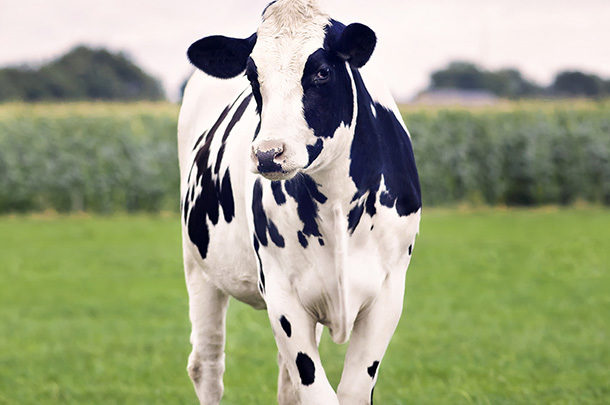AgroLiquid is actively researching how fertilization practices influence forage digestibility and quality. Why digestibility? Think of a cow as a milk “factory”. The primary factor that limits production is how much “raw material” the factory can process each day. So, for example, if our “milk factory” can consume a maximum of 85 pounds of feed per day, the amount of energy and nutrients contained within that 85 pounds that the cow is able to extract and utilize is what determines how much milk that cow can produce. Differences in the amount of energy extracted (how digestible the feed is) directly correlates to the amount of milk that factory will produce. Why not just feed the very highest energy feeds possible – grain and fats?
The answer is that cows are ruminants, having multiple “stomachs”. Their digestive system uses bacteria and enzymes to digest fibrous plant material. For their digestive system to work properly it must have large amounts of digestible and indigestible fiber. Fats (like vegetable oils) largely pass through this system undigested. This system is also limited to how much non-fibrous concentrate (grains) it can handle. Why is alfalfa so important as a dairy cow forage? The reasons include its overall yield, higher digestible energy content compared with grasses, its high levels of usable protein, and its mineral nutrient content including the critically important calcium (why milk is a great source of dietary calcium).
Of the three macronutrients, nitrogen (N), phosphorous (P), and potassium (K), potassium may the least understood in how it influences forage digestibility. Potassium plays a large role in the yield and quality of forage crops. Potassium plays a key role in the photosynthesis, respiration, translocation and many enzyme systems in plants, and also increases disease resistance. For alfalfa, potassium is a dichotomy of sorts. It strongly influences yield, but only to a point – I will discuss that in greater length later in this article. Other ways it is important include improving the level of carbohydrates stored in alfalfa roots. Greater stand persistence is a result.

Maximum alfalfa yields are usually reached with potassium concentrations in midstem samples of 1.25 to 1.75% and in the top six inches of the plant of 2.0 to 2.5%. Higher concentrations are undesirable in alfalfa because it reduces calcium and other element concentrations, thereby adversely affecting the cow’s utilization of the forage and increasing the occurrence of “milk fever” after calving (an acute deficiency of blood calcium). The way it happens is this: As dairy cows enter the lactation stage “freshening” prior to calving, large amounts of calcium leave the cow’s blood and enters the milk she is now producing faster than it can be replaced. This decreased calcium concentration in the blood lowers the blood pH, causing nerve disorders, muscle weakness, loss of appetite, paralysis, and subsequent death if not treated immediately.
The rations for freshening cows should therefore be relatively anionic (lower in potassium) in the month prior to calving to raise blood calcium levels. But, having a steadily available supply of lower potassium alfalfa is difficult because producers often fertilize for high forage yields with potassium chloride fertilizer without regard to actual soil test levels, and in trying to maximize alfalfa yields. Through soil testing, lower potassium concentrations in forages are possible by avoiding building soil potassium to higher levels than necessary and using careful fertilization practices.
The most common source of potassium fertilizer is potassium chloride, a pure salt. It’s well known that high rates of potassium chloride often create a chloride toxicity, particularly where significant soil chloride levels are already present, which is often the case where manure is spread. Excess chloride can also reduce plants’ uptake of other vital nutrients like nitrogen, sulfur, phosphorus, boron and others, which often takes a heavy toll on yields and forage quality. The very high salt of potassium chloride can also lead to reduced soil microbiological activity and poor germination of new seeding.
According to David Weber writing in the Progressive Dairyman, “Particularly in fresh cows, research shows how alarming forages high in chloride can be for performance and health. In fact increasing levels of chloride in lactating diets has a negative effect on feed intake and milk production. To avoid these pitfalls, diets must be formulated to account for the variability in forage chloride levels to optimize milk production. Chloride is continually recycled on the dairy. Potassium exits the farm in many avenues, including in the milk. Chloride, though, is left behind in manure and applied back onto the fields.
The rising chloride levels and the continuous potassium chloride fertilization have resulted in extreme forage variability in macromineral levels”. Weber found that some forages had chloride levels over 1 percent of ration dry matter, which negatively affects lactating cow performance and health. To account for the chloride being regularly applied through potassium chloride fertilizer, routine chlorine testing in all forages is advised. This information will allow ration formulation to meet cows’ needs. ![]()
Dan Peterson is field agronomy manager for AgroLiquid.










